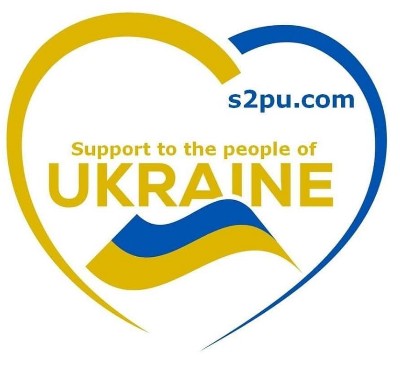The genocide Holodomor
The Ukrainian government and Ukrainian historians agree on the validity of the term.
The commemoration of the famine did not start before 1948, when Ukrainians in Germany marked the fifteenth anniversary of the famine. In Stalin’s Soviet Union, to discuss or research the famine, was prohibited. The topic was shrouded in silence and one could risk a gulag sentence for discussing the event in public, as professor Kulchytsky explained to me. One can look at this through the definition of Silencing of Assmann, in which a perpetrator is reluctant to remember and creates taboos in order to stop victims from recounting. Russian Wikipedia holds that, before the birth of a proper narrative or any commemoration of the famine, news on the catastrophe had eventually appeared in western press already in 1933.
“In the early spring of 1933, several newspapers in Western countries published a number of reports on the situation in the USSR ‘about ‘serious food difficulties and even worse conditions in Ukraine, the North Caucasus, the Lower Volga and several other regions’ (New York Times ) reported by the Soviet leadership”.
But the fact that the news was published in the West and not in the Soviet Union, gave the topic a more propagandistic character than a historical one. With the rise of the new authoritarian fascist and Nazi regimes, the topic of the famine was quickly adopted by the anti-Communist extreme right.
“The theme of a deliberately organized hunger continued to be used by both pro-fascist circles in the USA and Nazi Germany”.
In the beginning of the 40s with the breakout of World War II, the elucidation of what really took place in 1932-33 did not improve remaining subject of exploitations, according to Russian Wikipedia.
“The theme of the deliberately organized famine by the ‘Moscow Jewish Communist regime against Ukrainians’ was used in the propaganda and publications of the OUN (b) and OUN (m) in the first months of the German occupation of the Ukrainian SSR in 1941. Since 1942, after purges in both OUN, ‘Eastern Ukrainians’ were also involved in the publication company”.
The nature of the famine’s debate would since then (the 30s and 40s) become subject to propaganda. Like the news, the birth of a proper narrative on the event after World War II, would be highly divisive and a source of disagreements. Again, this narrative, like the newspaper reports of the previous decades, did not start in the Soviet Union, but abroad within the Ukrainian diaspora, especially in Canada and in the USA. Ukrainian immigrants had settled in Canada and in the USA during the late nineteenth and early twentieth century. Most of them took up jobs as peasants in Canada and coal miners and factory workers in the USA. The majority came from the Austro-Hungarian Empire, from the provinces of Bukovyna, Galicia and Carpatho-Ukraine.
Eventually a second wave of more nationally conscious immigrants, mostly composed by labor workers from rural areas, would emerge between the two world wars. These were educated and politically more aware than the previous wave and “…they had taken part in various attempts to achieve Ukrainian independence in the wake of the Bolsheviks revolution in the Russian empire”.
It was this wave of immigrants and their publications that managed to introduce Ukrainian national aspiration in the West. Yet the glorification of the Ukrainian nation and the fact that some of them, the “…so called integral nationalists flirted with various fascist ideology” , would subsequently, draw harsh criticism especially from Russian historians. This continues down to these days.
Raphael Lemkin from Lviv the author of the term “genocide”, in 1953 was firm in indicating the gravity of the event and the perpetrator. “A recently discovered 1953 speech by Raphael Lemkin, the Jewish-Polish scholar who coined the term genocide, contributed to the shift in the debate; Stalin's famine, he said, was "not simply a case of mass murder" but "a case of genocide, of destruction, not of individuals only, but of a culture and a nation."
Ukraine identity was to many North Americans and Europeans, too nationalist and therefore dubious. But in the 80s, with glasnost and a better-established Ukrainian diaspora (with a larger body of middle-class citizens) in North America and Europe that could afford to support the production of films and books, the topic of the famine began to draw public attention. During this time the term “famine” (голод) was replaced by the neologism Holodomor and first appeared as “Holodomord” (not “Holodomor”) in the USA and Canada. It became more widespread and known as “Holodomor” in 1988.
“As a genocide perpetrated against the Ukrainian nation, the famine became known as the Holodomor, which means plague of hunger”. Eventually the term was not new. It had been already used in the USSR where the word was adopted for the first time by Ivan Drach, a Ukrainian poet and activist. In 1986 during Gorbachev’s perestroika , while the topic of the famine was still public taboo, at the Writers’ Union Congress in Ukraine, the famine was discussed as a topic of national importance. Here, Ivan Drach, accusing the leadership of the Communist Party of Ukraine, related the disaster of Chernobyl nuclear power plant, with the extermination of Ukrainians during the famine of 1932-33.
Today most Ukrainians have positively received the term Holodomor and fully acknowledge its meaning. The Ukrainian government and most Ukrainian historians also agree on the validity of the term.
Andreas Kappeler is a Swiss historian and professor of Eastern European history in Vienna. In his article “Ukraine and Russia: Legacies of the imperial past and competing memories” (2014), points out that the famine was man-made and caused by the policies of Stalinist Soviet Union in peacetime.
The famine was the result of Stalin's ruthless policies, driven by disregard for human life. It was man-made and therefore totally avoidable.
Now is the time for the Nordic countries to also recognize Holodomor as a genocide.
